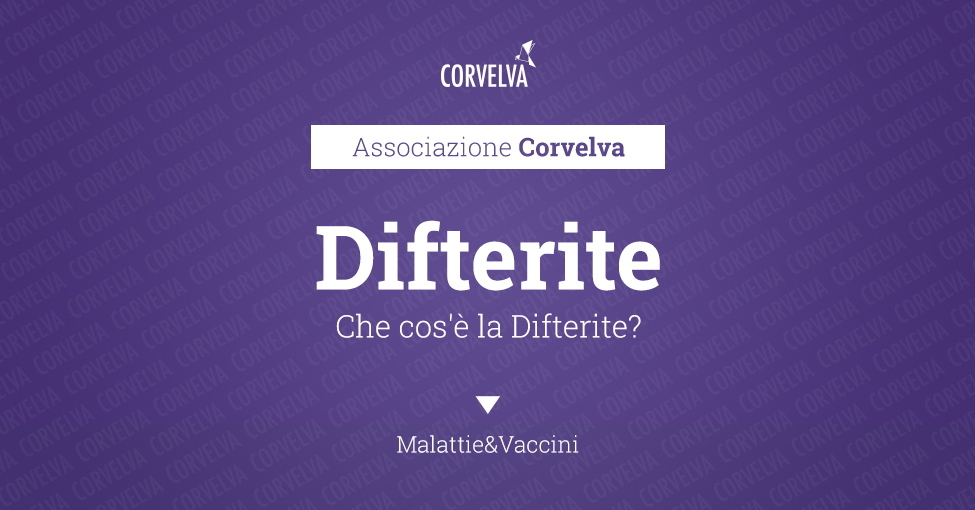What is Diphtheria?

IMPORTANT NOTE: Corvelva invites you to get in-depth information by reading all the sections and links, as well as the manufacturer's product leaflets and technical data sheets, and to speak with one or more trusted professionals before deciding to vaccinate yourself or your child. This information is for informational purposes only and is not intended as medical advice.
Diphtheria is a rare toxin-mediated respiratory disease caused by the bacterium Corynebacterium diphtheriae (C. diphtheriae), a gram-positive aerobic bacillus. Production of the toxin occurs only when C. diphtheriae is affected by the specific virus that contains the genetic information of the toxin. When this happens, severe disease occurs. There are four different types (biotypes) of C. diphtheriae: belfanti, gravis, intermedius and mitis. All strains can cause toxin production which can lead to serious illness.(1)
Diphtheria causes a gray-green or black fibrous covering (pseudomembrane) in the back of the throat and on the tonsils. The pseudomembrane can restrict breathing and swallowing. Other symptoms of the disease are swollen lymph nodes in the neck, sore throat, weakness, malaise, fever and chills.(2) If toxins enter the bloodstream, further complications can occur, including neuritis, myocarditis, proteinuria, pneumonia, thrombocytopenia, and death.(3)
Diphtheria is contagious and is spread from person to person through respiratory secretions (coughing, sneezing). It can also be transmitted by touching a wound on a person with diphtheria or by touching objects contaminated with the bacteria. Vaccinated people are still able to shed the bacterium because vaccination does not eliminate the carriage of Corynebacterium diphtheriae in the back of the throat or on the skin.(4)
The incubation period for diphtheria ranges from one to 10 days, but is typically between two and five days. The disease can affect any mucous membrane in the body and symptoms vary depending on the site. Areas that can become infected include the skin (cutaneous), anterior nasal passages, tonsils and pharynx, voice box, eye (eyepiece), external ear canal, and genitals.(5) Some strains of diphtheria do not produce toxins and typically cause mild to moderate inflammation of the throat.(6) Diphtheria can recur in individuals who have already had the disease.(7)
Cutaneous diphtheria is common in people residing in tropical countries. In the United States it is usually found among people experiencing homelessness and the strains are not generally toxin producers. These infections typically present as ulcers or rashes.(8) In 2019, the CDC updated the diphtheria case definition to include cases of cutaneous diphtheria.(9) However, as of March 2021, there are no adequate data on the prevalence of cutaneous diphtheria in the United States.(10)
C. diphtheriae is unique to humans and most affected individuals are asymptomatic. The disease is extremely rare in the United States and other developed countries with good sanitation conditions.(11) Between 1996 and 2017, 13 cases of respiratory diphtheria were reported in the United States – five culture-confirmed and eight considered probable because culture was not completed. Of these cases, one death occurred in an international traveler returning from an area where diphtheria is considered endemic.(12)
References (click to open)
- Communication and Education Branch, National Center for Immunization and Respiratory Diseases (NCIRD) and the Centers for Disease Control (CDC). diphtheria. 13th ed. Centers for Disease Control (CDC) Aug. 18, 2021.
- U.S. Centers for Disease Control and Prevention. Symptoms. In: Diphtheria. May 26, 2020.
- Communication and Education Branch, National Center for Immunization and Respiratory Diseases (NCIRD) and the Centers for Disease Control (CDC). diphtheria. 13th ed. Centers for Disease Control (CDC) Aug. 18, 2021.
- Communication and Education Branch, National Center for Immunization and Respiratory Diseases (NCIRD) and the Centers for Disease Control (CDC). Chapter 1: Diphtheria. Centers for Disease Control (CDC) May 29, 2019.
- Communication and Education Branch, National Center for Immunization and Respiratory Diseases (NCIRD) and the Centers for Disease Control (CDC). diphtheria. 13th ed. Centers for Disease Control (CDC) Aug. 18, 2021.
- Communication and Education Branch, National Center for Immunization and Respiratory Diseases (NCIRD) and the Centers for Disease Control (CDC). diphtheria. 13th ed. Centers for Disease Control (CDC) Aug. 18, 2021.
- Cleveland Clinic. diphtheria. Aug. 16, 2018.
- Communication and Education Branch, National Center for Immunization and Respiratory Diseases (NCIRD) and the Centers for Disease Control (CDC). diphtheria. 13th ed. Centers for Disease Control (CDC) Aug. 18, 2021.
- U.S. Centers for Disease Control and Prevention. Diphtheria (Corynebacterium diphtheriae) 2019 Case Definition. Apr. 16, 2021.
- Griffith J, Bozio CH, Poel AJ, et al. Imported Toxin-Producing Cutaneous Diphtheria — Minnesota, Washington, and New Mexico, 2015–2018. MMWR. Mar. 29, 2019; 68(12):281–284 .
- Communication and Education Branch, National Center for Immunization and Respiratory Diseases (NCIRD) and the Centers for Disease Control (CDC). diphtheria. 13th ed. Centers for Disease Control (CDC) Aug. 18, 2021.
- Communication and Education Branch, National Center for Immunization and Respiratory Diseases (NCIRD) and the Centers for Disease Control (CDC). Chapter 1: Diphtheria. Centers for Disease Control (CDC) May 29, 2019.
This article is summarized and translated by National Vaccine Information Center.

